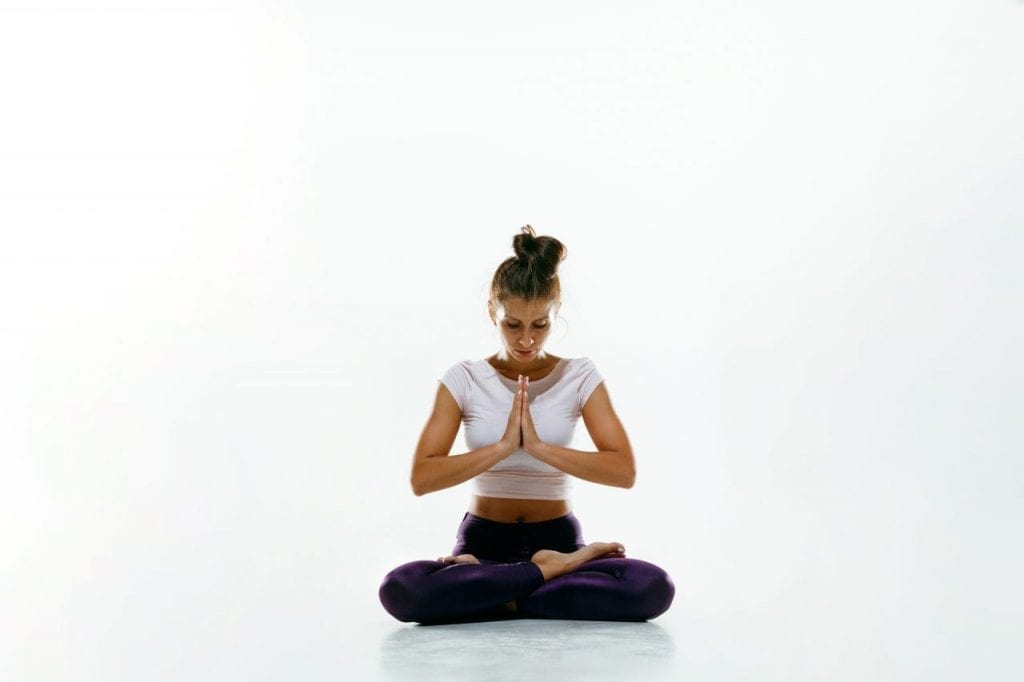What is Kriya Yoga?
The Kriya Yoga is an ancient yogic spiritual practice that focuses on the union of the body, mind, and spirit through techniques of meditation, breathing, and ethical discipline.
Popularized in modern times by Paramahansa Yogananda through his work Autobiography of a Yogi, Kriya Yoga is considered a path to self-realization and spiritual enlightenment.
It is distinguished by its systematic and structured approach that integrates various meditation techniques and pranayama (breath control).

These practices are designed to accelerate spiritual development and facilitate internal purification.
Among the most outstanding techniques is Kriya Pranayama, which involves a series of deep and rhythmic breathing exercises that help raise vital energy (prana) along the spine, thereby stimulating the chakras and promoting a higher state of awareness.
Additionally, Kriya Yoga includes the observance of ethical principles known as Yamas and Niyamas, which are fundamental for moral development and personal discipline.
These principles promote a life of non-violence, truthfulness, self-control, purity and surrender to the greater good, creating a solid foundation for spiritual practice.
What are kriyas and how many are there?
The term “kriya” refers to a series of yogic techniques designed to accelerate spiritual development and promote self-realization.
The number of kriyas within Kriya Yoga may vary according to the tradition, the lineage, or the teacher who teaches them. However, generally, Kriya Yoga includes several key practices that are integrated to facilitate the purification of the body and mind, as well as the elevation of spiritual awareness.
Variations by lineage
Depending on the lineage or the teacher, the number and nature of the kriyas may vary. For example:
- Paramahansa Yogananda: In his teaching, Kriya Yoga primarily includes Kriya Pranayama as the central technique, complemented by other preparatory and meditative practices.
- Lahiri Mahasaya and Sri Yukteswar: They also emphasize Kriya Pranayama, but may include additional steps specific to purification and spiritual development.
What is Sudarshan Kriya?
The Sudarshan Kriya is an advanced breathing technique developed by Sri Sri Ravi Shankar, founder of the Art of Living organization.
The main features of this practice include a sequence of rhythmic breaths performed at different speeds: slow, medium, and fast.
These breathing patterns are designed to balance the nervous system and harmonize the body’s vital energy. In addition, the Sudarshan Kriya is taught through workshops and courses organized by the Art of Living, making it accessible to people of all ages and experience levels.

Regarding the benefits, Sudarshan Kriya is highly effective for stress reduction, as it helps to lower cortisol levels, the stress hormone, promoting a sense of calm and deep relaxation.
It also contributes to the improvement of mental health, facilitating mental clarity, increasing concentration, and reducing anxiety and depression.
Physically, this technique promotes the detoxification of the body, strengthens the immune system, and increases vital energy, resulting in greater overall well-being.
Additionally, it promotes emotional balance by releasing accumulated tensions, which leads to greater emotional stability and better management of emotions.
What is the difference between Sudarshan Kriya and other breathing techniques?
The Sudarshan Kriya differs from other breathing techniques due to its unique focus on rhythmic and cyclical patterns that combine slow, medium, and fast breaths to balance the nervous system.
Unlike many techniques that focus on a single rhythm, Sudarshan Kriya offers a varied structure that promotes both calmness and revitalization.
In addition, it is integrated with meditation and yoga practices, providing a holistic approach to physical, mental, and emotional well-being.
Another key difference is its standardized teaching through the organization Art of Living, ensuring a consistent and safe practice under the guidance of certified instructors.
The Sudarshan Kriya also has scientific backing that supports its benefits for reducing stress, anxiety, and improving the immune system, which gives it a solid foundation compared to other techniques that may lack empirical evidence.
Finally, the Sudarshan Kriya emphasizes the release of emotional tensions and offers a global support community, facilitating ongoing practice and sustained personal growth.
These features make Sudarshan Kriya not only an effective breathing technique but also a comprehensive tool for personal transformation.
4 main techniques of Sudarshan Kriya
The following are the four main breathing techniques that make up Sudarshan Kriya:
The first technique is Bhastrika (Bellows Breath), a vigorous and energizing breath that involves rapid and deep inhalations and exhalations.
This technique not only increases energy and vitality but also improves blood circulation and detoxifies the body by releasing accumulated toxins. Additionally, it stimulates the nervous system, promoting greater mental clarity.

The second is the Kapalabhati (Skull Cleansing Breath), a quick and dynamic breath that focuses on forced exhalations followed by passive inhalations.
Kapalabhati purifies the sinuses and the brain, improves lung function and respiratory capacity, and stimulates the digestive system, facilitating the elimination of metabolic waste. This technique also increases concentration and mental sharpness.
The third technique is the Ujjayi (Victorious Breath), a slow and deep breath characterized by a gentle sound similar to the ocean when inhaling and exhaling.
This technique calms the nervous system, reducing stress and anxiety, and increases the ability to concentrate and focus. In addition, it improves the circulation of vital energy (prana) in the body and facilitates deep meditative states.
Finally, the Sudarshan Kriya is the central technique that integrates rhythmic and cyclical patterns of breathing, combining the previous three techniques in a sequential manner.
This method balances the autonomic nervous system, promoting a sense of calm and well-being, and significantly reduces cortisol levels, the stress hormone.
Additionally, it improves mental health by reducing anxiety and depression, strengthens the immune system, and boosts vital energy, all of which contribute to greater mental clarity and emotional stability.
Empowering synergy
These four techniques are practiced in a specific sequence during a Sudarshan Kriya session, allowing for a synergy that enhances their individual effects.
The combination of energization, purification, calm, and balance creates a state of overall well-being, facilitating personal and spiritual transformation.
Other meditation techniques
In addition to Kriya Yoga and Sudarshan Kriya, there are other meditation techniques in yoga that play fundamental roles in spiritual development and overall well-being.
For example, Yoga Nidra, known as “yogic sleep,” guides the practitioner through a deep conscious relaxation, facilitating the release of physical and mental tensions while maintaining a state of alertness.
On the other hand, Kundalini Meditation focuses on awakening the latent energy at the base of the spine, using combinations of breathing, mantras, and specific postures to elevate this energy along the chakras, thus promoting a profound transformation and a greater spiritual connection.
Another highlighted practice is Hatha Yoga, which although traditionally associated more with physical postures (asanas) and breath control (pranayama), also incorporates meditation techniques that help to balance the body and mind.
These techniques, along with Kriya Yoga and Sudarshan Kriya, offer various paths to achieve mental peace, spiritual clarity, and overall well-being, allowing each individual to choose the path that best aligns with their personal needs and goals in their journey of self-discovery and spiritual growth.







